Artist Sayre Gomez: ‘For me, it’s always a conversation between painting and photography’
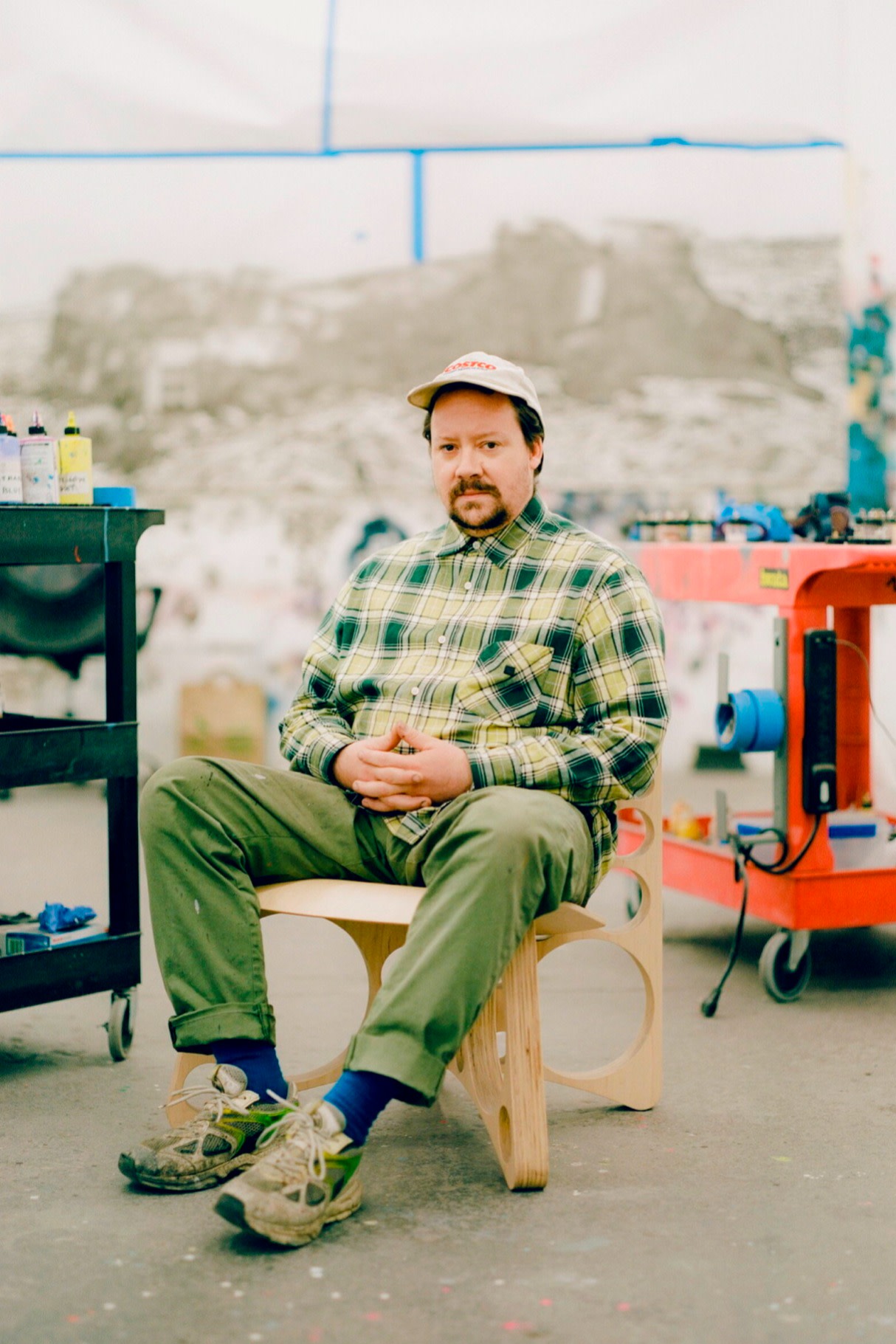
Roula Khalaf, Editor of the FT, selects her favourite stories in this weekly newsletter.
In Sayre Gomez’s photorealist paintings of Los Angeles, the same mountains and expansive skies that fascinated Ed Ruscha and David Hockney preside over the city’s less romantic features: strip-mall nail salons, junkyards, parking lots. For the artist, these sites capture the overlooked beauty of commercial signage throughout the urban landscape.
“It’s almost like a Ginsberg poem,” Gomez says as we tour his studio, affectionately describing the parking-lot lightboxes that appear in many of his paintings. Like the appropriated text of Allen Ginsberg’s Beat poetry, “You’ve got all these businesses in these isolated little boxes, but then their slogans slam together: Crab Shack. Lavandería. They’re in Armenian. They’re in Korean. They’re in English and Spanish.”
This is the Los Angeles that surrounds Gomez’s studio in Boyle Heights, where he works with a staff of eight. This year at Frieze LA, the artist’s work will appear on Xavier Hufkens’ and François Ghebaly’s booths, while it is also on view in different corners of the globe: the National Gallery of Victoria Triennial in Melbourne, a solo show at Hufkens’ Brussels gallery, group shows at the Broad in LA and the Rubell Museum in Miami.
Throughout, his subtly beguiling scenes play with perceptions of realism, depth and surface in different ways. Works such as “Diamonds and Pearls” (2022), a diptych on view now at the Broad, place two-dimensional subjects behind translucent barriers; through a nail-salon storefront, cast with reflections from the street, we see the unexpectedly large hands and feet of a poster behind the glass.
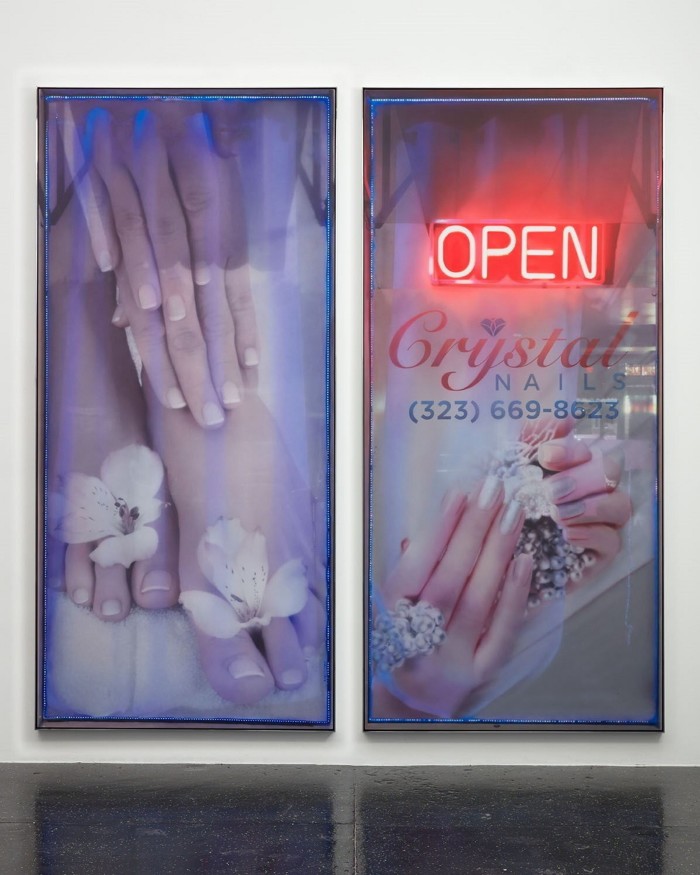
“There are things that I’ve driven by 25 times before realising there’s something interesting happening there,” Gomez says of his subject matter. “For whatever reason, perspectives change; some things that are completely uninteresting from one angle can become completely sublime, surreal and fantastic from another.”
His studio comprises two spaces in adjacent buildings, both colourfully furnished and illuminated by skylights. In the more tranquil space, where Playskool toys await Gomez’s young children whenever they visit, each of his works begins as a digital photograph, or more than likely, several. “I take images from everywhere,” he says, including stock photos, Instagram, his own photos and staged shoots, which he may manipulate using Photoshop, Illustrator and more recently the 3D rendering software Maya. The finished image, often a composite of varied graphic elements and visual textures, is then printed as a vinyl stencil. In the production studio next door, assistants in air-filtration masks then airbrush these into paintings, periodically referring to the image on iPad screens.
As staggeringly photorealistic paintings of an inherently flat digital image, Gomez’s large-scale works have a confounding presence when viewed in real life. “For me, it’s always a conversation between painting and photography,” he says, extolling the airbrush’s slick retouching capabilities as the original Photoshop. His paintings frequently include subtle allusions to their digital source material, such as the faint halos that surround low-resolution objects when they’re enlarged. In one in-progress painting, the LA horizon appears behind a slight haze of digital noise. According to Gomez, “Zooming in on this photograph made it pixelated, and airbrush is really good at accentuating that.”
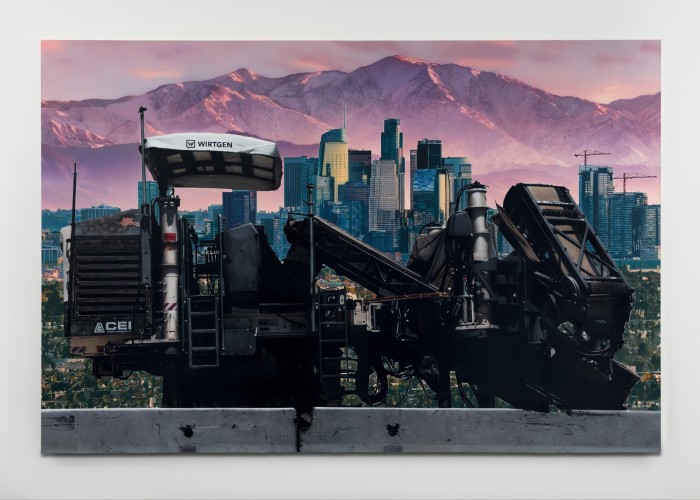
Gomez moved from his native Chicago to LA in 2006 to attend the MFA programme at the California Institute of the Arts. “It was this very conceptual environment where there weren’t very many painters,” he says, which ultimately shaped his artistic approach. “Whatever the idea is, you find the best way to articulate it,” which may include the use of fabricators, assistants or software.
A younger generation of LA artists has embraced versions of this process in their work, using airbrushed collage to express personal narratives about the city. Gomez’s compositions similarly function as indirect biographies, reflecting his longtime aesthetic interest in graphic design. His grandfather was an architectural draftsman who exposed the artist to the world of technical drawings, stencils and analogue clip art. Gomez also recalls his childhood love of comic books and zine-making, and early-career work designing T-shirts for brands such as Stüssy.
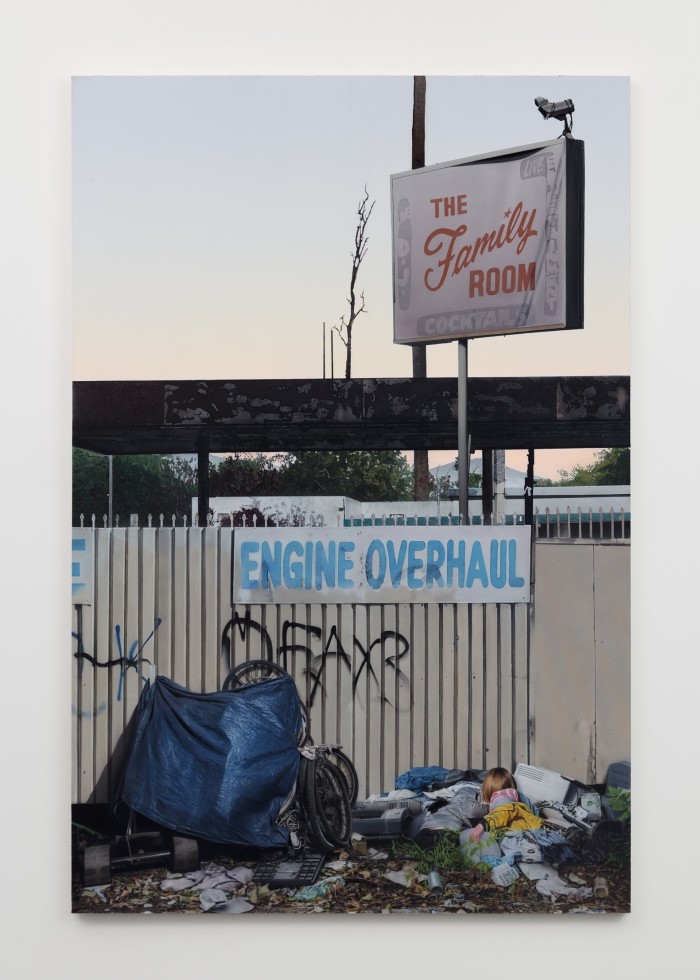
Gomez’s 2012 paintings on view now at the Rubell Museum feature simple compositions of texts and geometric shapes, a conceptual precursor to his current collages. “Why am I going through this huge conceptual apparatus?” he recalls eventually asking himself, having recognised all his graphic interests in the urban landscape. “Everything is already right there, across the street.”
At Gomez’s solo show at Xavier Hufkens in Brussels, his latest works feature the distinctly more dystopian imagery of tattered signs and decaying buildings. Some of the degraded surfaces come from real-life photographs, while others were digitally aged. They recall earlier bodies of work, where he superimposed stickers, digitally scratched out and partially peeled, on to the torn pages of books or the surface of wooden desks. Those textural, trompe-l’œil effects interrupt the slickness of photorealism. “These visual cues of entropy are a demarcation of time, or real life,” the artist says. “It’s not real unless it’s a little fucked up.”
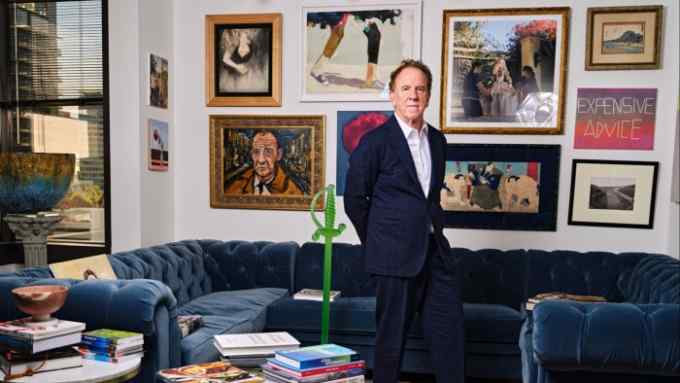
Comments